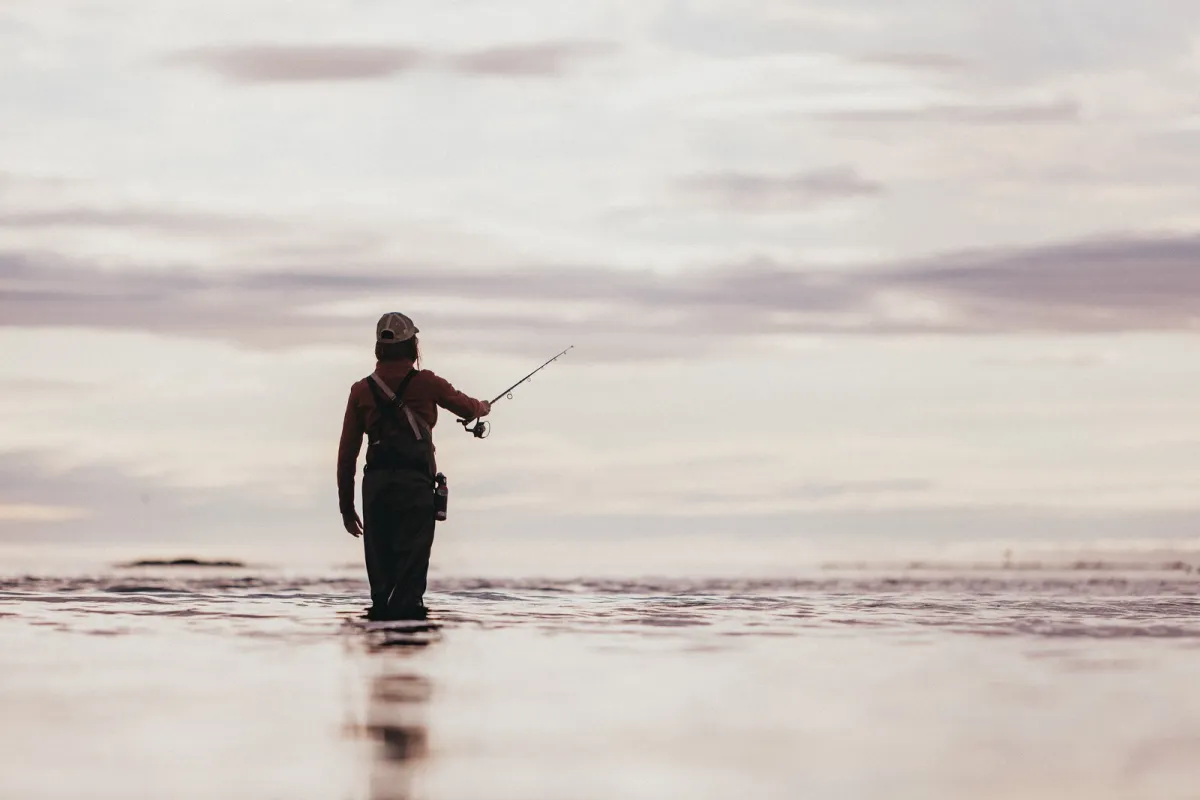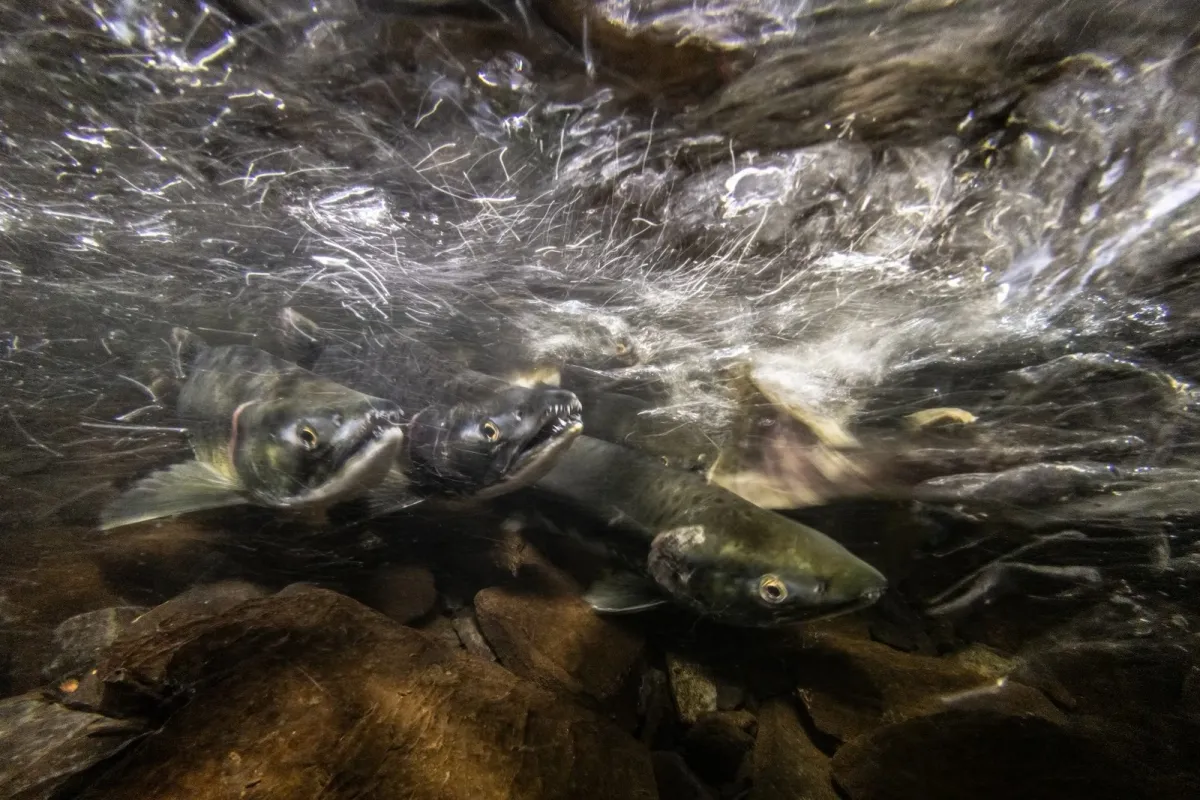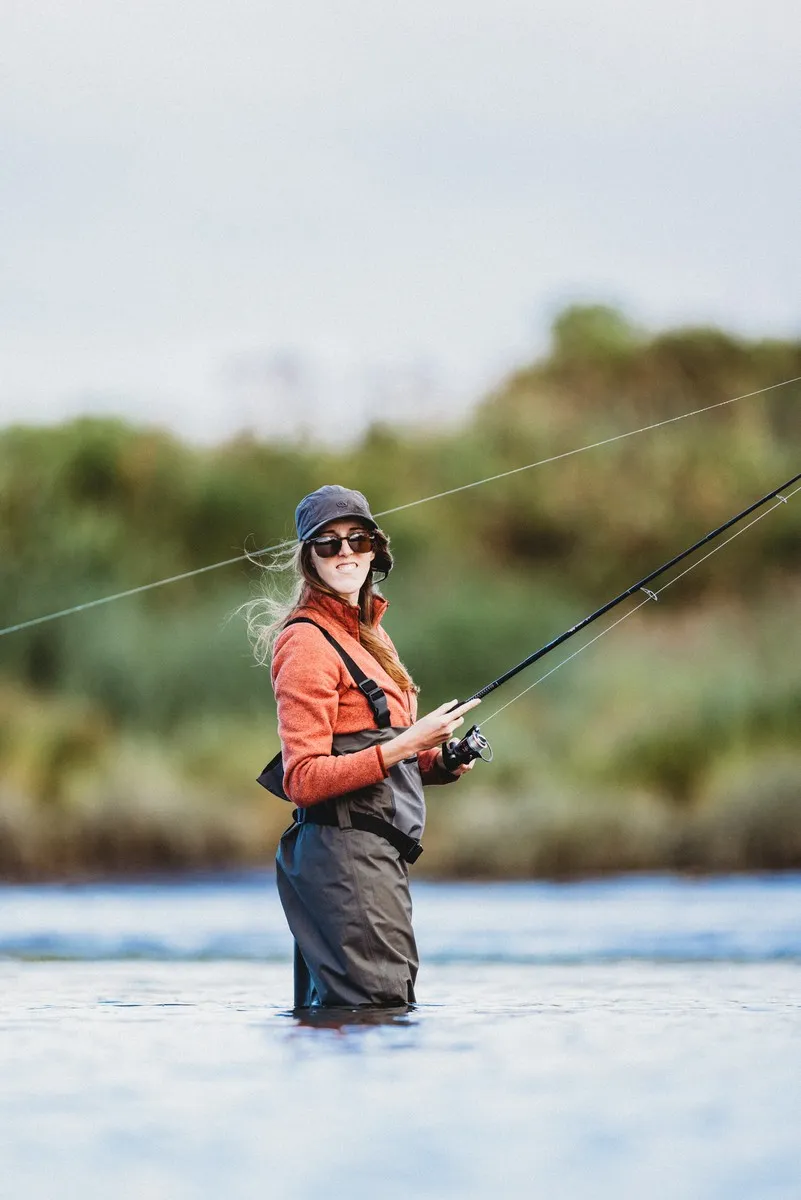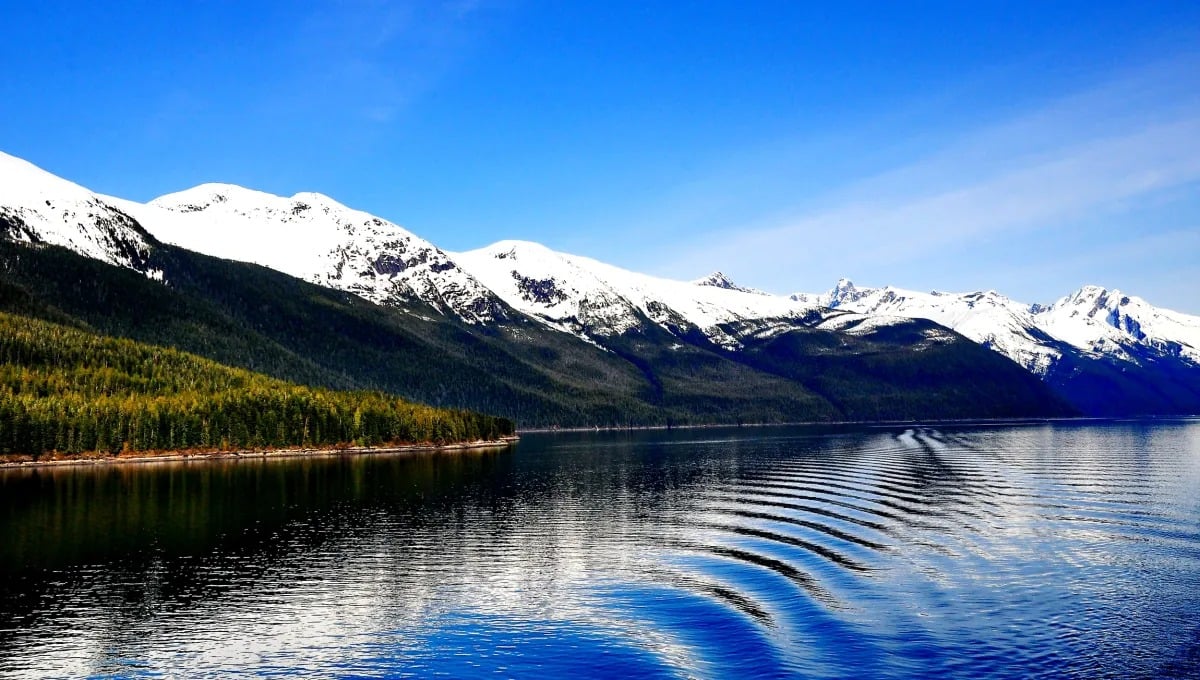
Alaska is an angler's dream. With rivers teeming with salmon, the Last Frontier is the perfect destination for anglers looking to land their first pacific salmon. But like any fish, there are certain tips and tricks that will make your fishing experience much more enjoyable.
In this guide, we will cover the basics of salmon fishing in Alaska, from the types of salmon that live in these waters to the best techniques. While you can fish for salmon in the ocean or on the river, this guide focuses more on river fishing, so you can simply pick up a rod and hit the bank!
Different Types of Salmon in Alaska

Five salmon species call Alaskan waters home. Every year, these salmon head upstream, going through a transformation in the process. It is important to be able to recognize each type of salmon in their different phases as you head to the rivers.
Chinook (king) Salmon
- Size: They are the largest, often weighing between 20-70 pounds, with some reaching over 100 pounds.
- Color: In the ocean, they are bluish-green on top with silver sides.
- Transformation: As they head upriver, their color shifts to a deep maroon or olive green, and males develop a hooked snout.
- Behavior: Known for their strength, they give anglers a challenging and rewarding experience. They prefer deeper waters and are less likely to jump when hooked compared to other salmon species.
Coho (silver) Salmon: - Size: Typically weighing between 8-12 pounds, with some growing up to 20 pounds.
- Color: Silvery sides and a dark metallic blue back in the ocean.
- Transformation: They turn a brilliant shade of red with a dark green or blue back when they spawn.
- Behavior: Coho are feisty and known for their acrobatic displays when hooked, often leaping out of the water.
Sockeye (red) Salmon
- Size: Average weight is between 5-15 pounds.
- Color: In the ocean, they are blue-backed with silver sides.
- Transformation: Their bodies become a vibrant red while heads turn a greenish hue during spawning.
- Behavior: They are most well-known for their impressive migrations, making them a favorite for river fishing. They tend to travel in large groups, offering abundant opportunities for anglers.
Pink (humpback) Salmon
- Size: Generally the smallest, averaging around 3-5 pounds.
- Color: Bright silver in the ocean.
- Transformation: Males develop a pronounced hump on their back, and both sexes turn a pale to dusky pink.
- Behavior: Pinks are abundant and are a great starting point for novice anglers due to their manageable size and predictable behavior.
Chum (dog) Salmon
- Size: They range from 10-20 pounds.
- Color: Metallic greenish-blue on the back with silver sides in saltwater.
- Transformation: They display broad, colorful vertical stripes in various shades of purple, green, and red during spawning.
- Behavior: Chums are aggressive and can provide a challenging fight, making them fun for both fly and reel fishing.
Time of Year for Different Types of Salmon
While all salmon will run up river during the summer and fall, different months will see different surges. Understanding which type of salmon is running will help you determine the best place to go fishing and what variety to target.
- Chinook (king): May to July
- Sockeye (red): June to July
- Pink (humpback): Late June to August (even-numbered years)
- Chum (dog): June to August
Best Places to Salmon Fish in Alaska
While there are many great rivers and coastal areas to fish for salmon throughout the state, locals have a few favorite areas that typically yield excellent runs every year. These include:
- Bushkin and Pasaghak Rivers on Kodiak: Best for pinks and silver.
- Saltery Cover on Kodiak: Prime location for sockeye salmon.
- Kenai River: Renowned for its abundant king salmon.
- The Nushagak River: Remote fishing for king salmon.
- Bird Creek: The hotspot for silver salmon.
- Copper River Delta: Excellent sockeye run.
Fishing Gear

When fishing for salmon, your gear can make all the difference. There are a plethora of choices to suit every salmon's variety, but there are some good tips to stick to for all salmon.
Opt for longer rods, preferably over 8 feet, when fishing from the banks. For boat fishing, slightly shorter and sturdier rods are ideal. The bait and tackle will vary based on whether you're fishing from the shore or a boat. Popular choices include spinners, flies, wobblers, and spoons. Don't forget waders and boots for river fishing, and always carry polarized glasses to spot salmon easily.
Fishing Techniques

Your technique will largely depend on where you're fishing from, and what you are fishing with. Fishermen typically will opt to use a fly rod or a spinner reel. Both can be successful when fishing for salmon, but you will use different techniques for each.
Fly Fishing Techniques for Salmon
- Swing Fishing: Cast downstream and let the fly swing across the current. As the fly moves, it mimics the movement of smaller fish, attracting salmon.
- Nymphing: This technique involves presenting the fly (usually mimicking larvae or aquatic insects) beneath the water's surface. It requires detecting subtle bites and setting the hook quickly.
- Stripping: Retrieve the fly line in quick, short pulls to imitate a fleeing baitfish, prompting a chase from predatory salmon. This is the preferred method for silvers and sockeyes, as both can be aggressive strikers.
If you are new to fly fishing, consider signing up for a lesson during your Alaska trip. Not only will your guide be able to cover the basics of fly fishing, but they will also be able to help you learn about the best techniques for the salmon population in your area. Check out guides in Cooper Landing or at one of the many remote fishing lodges located around the state.
Reel Fishing Techniques for Salmon
- Trolling: This boat-based method involves pulling a lure or baited hook behind a moving boat. Adjusting the speed can make a significant difference in attracting salmon.
- Jigging: Here, you'll use a weighted lure, dropping it down and jerking it up in a rhythmic motion. The vertical movement attracts salmon, mimicking injured fish.
- Drift Fishing: Cast upstream and let the current carry your bait down, allowing it to drift naturally. It's an effective method in rivers with strong currents.
For beginners, it's essential to remember that patience is key. Each technique has its learning curve, but with time, the rewards are immensely satisfying.
Licenses and Regulations

Every angler in Alaska must have a fishing license, and targeting king salmon requires a special king salmon stamp. These can be acquired online or at outfitters. It's important to have your license with you, either in print or digitally via the Fish and Game app.
While fishing in Alaska, safety is a priority. When bears are nearby, anglers should vacate the river immediately and stop fishing. If you have any fish on stringers, place the stringer in the water and out of sight from the bear. If a bear approaches and you have a fish on the line, it's safer to cut the line than to challenge the bear. Always be bear aware while on the rivers and carry a few cans of bear spray on your wader belt. Bears are more interested in the fish than you, just give them the space to do their thing and enjoy the show.

